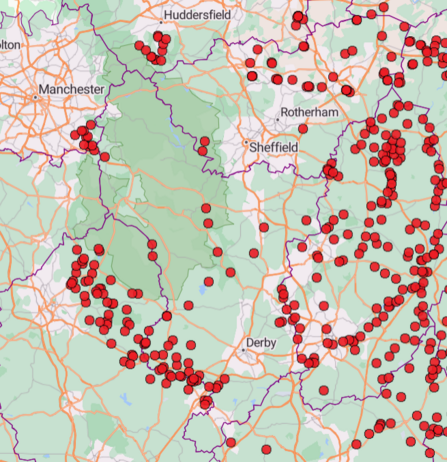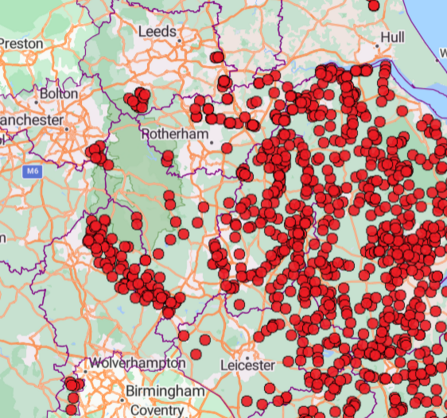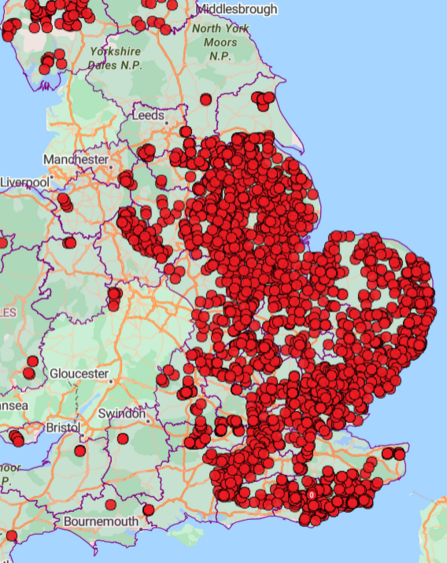In January 2024 – just 3 months after Derbyshire and Staffordshire Wildlife Trusts’ Dove Catchment Water Vole Recovery Project kicked off in earnest – the Waterlife Recovery Trust (WRT) announced that they had successfully eradicated the breeding population of American mink in East Anglia.
This was the culmination of years of work, and an intensive trapping programme spanning the preceding four years, which enabled them to rid miles of river and hundreds of square miles of wetlands from the invasive species. This incorporated hundreds of traps, collectively deployed for thousands of days, to clear the maze of East Anglian waterways.
American mink are well known to be voracious predators, but they are primarily known for being one of the key drivers of the dramatic decline in water vole populations in the last few decades – numbers have fallen 90% since the 1970s, making water voles one of the UK’s fastest declining mammals. American mink can devastate water vole populations, with male mink able to eat two water voles a day, every day, and female mink able to fit in water vole burrows, where they will take any young they find there.
Water vole distribution remains just a fraction of what it was 60 years ago, estimated in 2024 to be between 58,000 – 186,000 individuals.
However, their fortunes have been rather reversed in East Anglia. Once mink began to be removed, water vole populations started to resurge, so strongly the team had to invent water vole excluders, guards which fit around the trap entrance and which water voles are less likely to climb over, because they were catching so many water voles (these were, of course, released unharmed).
After over five years of hard work and intensive trapping, the WRT team announced in January 2024 that they had eliminated the breeding population of American mink from the trapping area.
Following on from their success, they have expanded their working areas – and paved the way for teams in other areas to follow suit.
Now, mink control is becoming more widespread across the country, with increasing numbers of organisations and individuals joining the fight against this non-native species – as demonstrated by the maps below, which show the location of mink traps registered with the WRT).
The location of mink traps deployed across north Staffordshire, Derbyshire, west Lincolnshire and south Yorkshire, and registered with the Waterlife Recovery Trust. Source: Waterlife Recovery Trust



